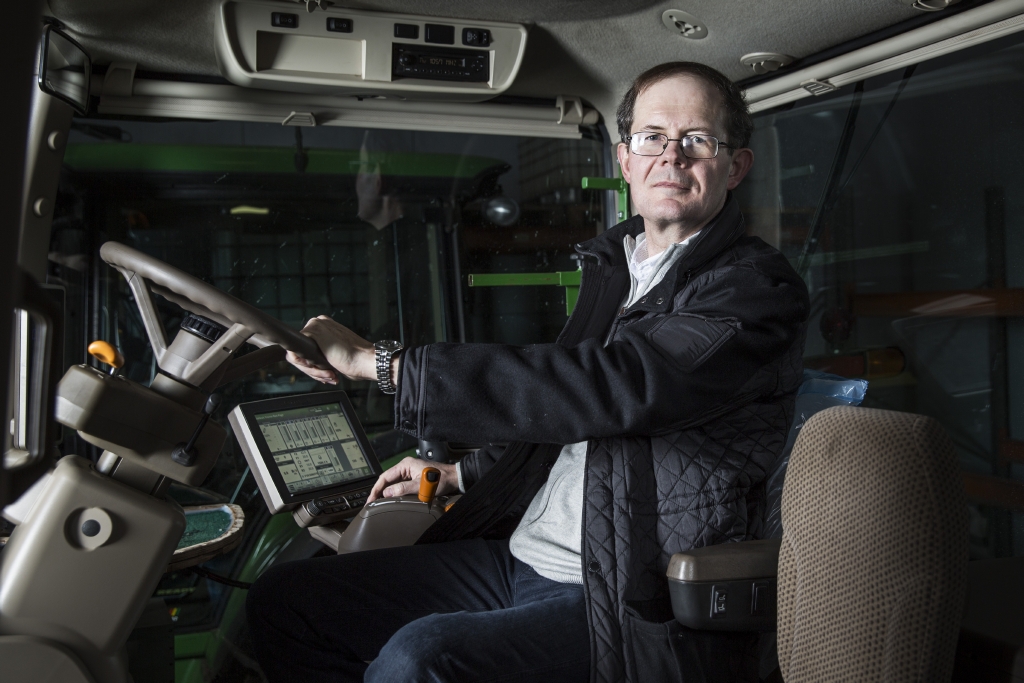New project boosts the digital revolution in the agricultural sector
Digital agriculture has moved a significant step forward with the publication of a new software tool developed by Aarhus University with a number of international partners. The tool will promote real interoperability between agricultural machinery, sensors and software.

The Internet of Things (IoT) has a huge potential to increase efficiency in the agricultural sector. However, at the moment smart devices from different manufacturers are not speaking the same language. As a result, they can’t share information, and this considerably limit their value.
For example, a combine harvester could collect valuable data as it works up and down a field, but if the machine’s software can’t talk with the farm computer system, the data can’t be used for important strategic decisions. Now, Aarhus University has joined forces with the companies 365FarmNet, AGCO, AgroIntelli, CNH Industrial, Grimme, and Kverneland, as well as Wageningen University in the Netherlands in order to overcome the problem of interoperability and to design the digital agricultural system for the future in the Food & Farm 2020 project.
Far more efficient farming
By means of a standardised framework tool, known as ADAPT, the project partners have shown how data can be exchanged between farming equipment and different brands of software platform in a harmonized format. This is an extremely important catalyst for the flow of data required to make a success out of digital agriculture, or "Agriculture 4.0" as it is also called, with reference to the industry's fourth revolution.
With a simple plug-in, software companies and equipment manufacturers will be able to read data from different sources, and this will drastically reduce development time, while also allowing for the available data streams to be increased. This provides much simpler data exchange between systems, which will ultimately lead to improved decision-making and a much more productive agricultural sector.
ADAPT is an open source software set from the AgGateway software company, and it is based on a universal data model that allows translation between various proprietary formats. Proof of concept was demonstrated on 1st of March 2018 in Almeria, Spain.
Interconnecting everything
The demonstration fully confirms the commitment from the more than 70 partners in the major European smart farming project Internet of Food & Farm 2020 (IoF2020) to developing an open and interoperable system in which data flows seamlessly between different systems in the value chain.
Ultimately, this means that farmers can use different types and brands of equipment with a wide range of software or services and, irrespective of manufacturer and supplier, the equipment and software will be able communicate.
The next step in digitisation of the agricultural sector is about real-time and two-way cloud-communication for vehicles. To achieve this, the team will be building on existing standards and working with the Agricultural Industry Electronics Foundation, AEF.
AEF is an independent organisation with more than 200 member companies. The main objective is to improve the compatibility between electronic and electrical components in agricultural machinery and to ensure transparency regarding compatibility issues.
Facts
IoF2020 fosters the large-scale uptake of IoT technologies in the European food and farming sector. With EURO 30 million co-funded by the EU, the project has the potential to drastically improve the sustainability and productivity of the European farming and food sector, while demonstrating the added value of smart webs of the connected objects in 19 use cases, covering 5 trials (e.g. arable crop, dairy, meat, vegetables and fruits) throughout Europe.
Contact
Senior researcher Claus Aage Grøn Sørensen
claus.soerensen@eng.au.dk
Phone.: +45 22 82 75 47
